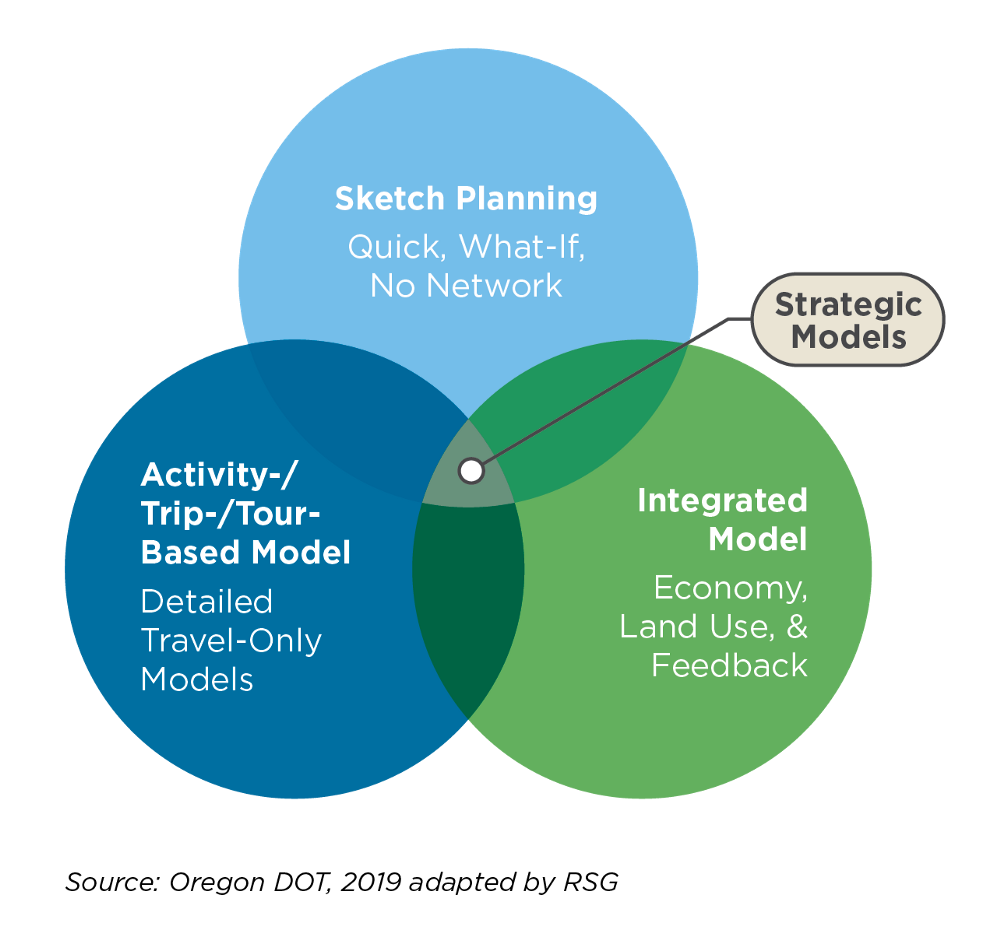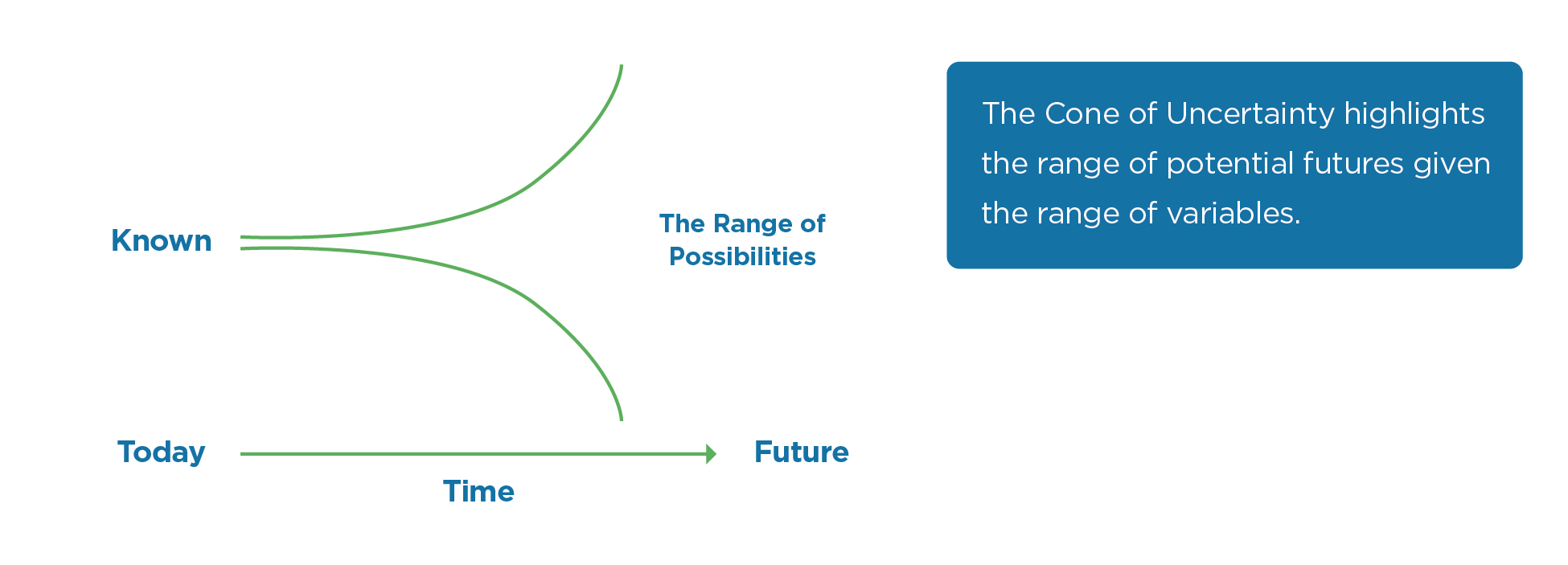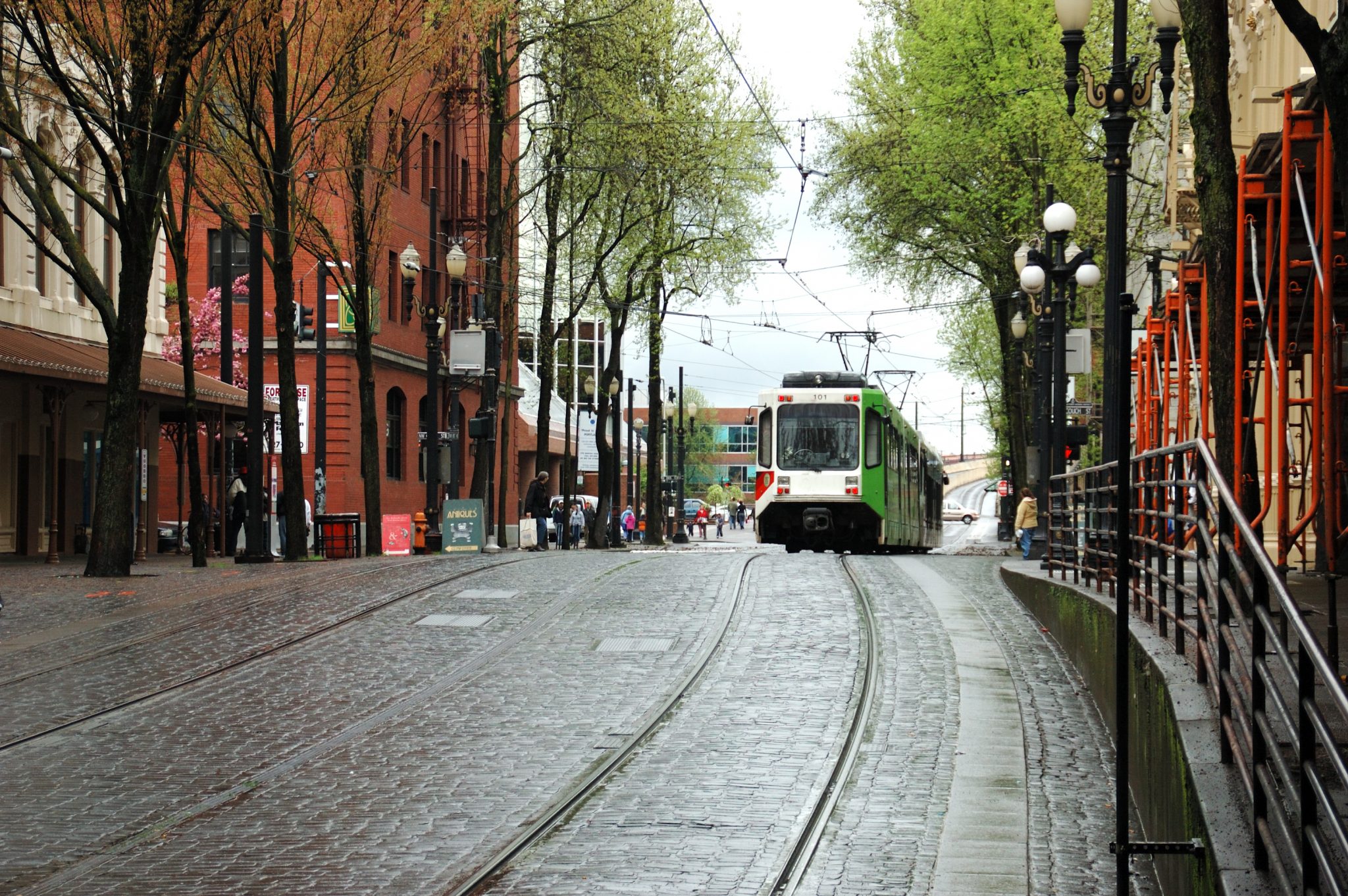The Oregon Transportation Plan (OTP) serves as the foundational transportation policy document for the state of Oregon. Developed by the Oregon Department of Transportation (ODOT), the OTP helps guide investment decisions that support the movement of people and goods across the state as far out as 2050.
The OTP was envisioned to be a flexible, resilient plan—responsive to the fact that the future is uncertain. To accomplish this, ODOT sought to explore a range of potential future scenarios during development of the OTP. This was done to ensure the OTP remains resilient, accounts for “drivers of change,” and maximizes the chances of achieving the desired future outcomes in the state.
The Challenge
The latest OTP update process, which began in 2021 and concluded in 2023, came at a crucial time for the state. Oregon, like many other states, has experienced an increase in rapid change: emerging technologies, climate-related concerns, economic disruptions, and other significant events—all of which have impacted the way residents live, work, and travel. Furthermore, from the outset of the update process, the ODOT project team—recognizing the state’s woefully insufficient level of transportation funding available in the present-day—emphasized that the OTP must address the need to increase and diversify Oregon’s transportation revenue sources.
As a result, the state wanted to develop an outcome-driven plan to guide its investments in the transportation system for the next 20–25 years while achieving its goals around equity, safety, sustainability, economic vitality, and multimodal travel options. ODOT needed a way to balance funding constraints along with a proactive and versatile approach to prioritize statewide investments.
ODOT’s experience leading the nation in greenhouse gas emission reductions had demonstrated the potential of models to assist with strategic planning activities that could answer specific planning questions. VisionEval, which is a common framework for strategic planning models, emerged from ODOT’s early work. ODOT and RSG were close collaborators in designing, implementing, and managing VisionEval in concert with the Federal Highway Administration.
As a result of our significant experience developing VisionEval and deploying it across the United States, RSG was selected as part of a team led by HDR to develop the OTP and use VisionEval as a key part of the analysis process.
RSG's Solution
Using VisionEval and TMIP-EMAT (Exploratory Modeling and Analysis Tool), the OTP process employed a financially bounded modeling approach to explore investment prioritization in an uncertain future. This enabled the evaluation of thousands of potential futures, offering quantitative insights for statewide planning use by practitioners. The OTP addresses key questions regarding investment choices, prioritization strategies, and the influence of emerging technologies and climate change.
This work occurred across two phases:
- Phase 1: During the first phase, our team tested a wide range of values among several different dimensions within Oregon’s sphere of influence. This included items such as land-use density, intelligent transportation system investments, roadway capacity, active travel, transit supply, vehicle electrification, and travel demand management.
- Phase 2: The second phase consisted of testing a range of uncertain inputs, such as highly connected vehicles, fully autonomous vehicles, changes in teleworking rates, fuel and energy prices, ridesharing utilization, and the availability and costs of ride-hailing.
The result of our team’s work is a dynamic modeling system that serves as the backbone of the OTP, offering critical insights into various scenarios to answer questions such as:
- How does funding allocation impact travel behaviors?
- Which investments should take priority, and how might this change over time?
- How can ODOT best align investment choices with budgetary constraints?
- How do outside factors (like emerging technologies, telework, or climate change) impact the transportation system?
By leveraging our team’s strategic transportation planning capabilities in concert with VisionEval, ODOT developed a statewide plan using the sophisticated EMAT interface to explore significantly more scenarios than previously available to practitioners. Moreover, a financially bounded model required investments to be constrained by available revenues and consider disbenefits when roadway repair and maintenance were insufficient to meet the system’s needs.
ODOT can now assess thousands of potential future scenarios and understand what led to the results that support the OTP Vision and objectives. Moreover, the agency and the state can continue to make good on their goal to build a safer, equitable, and more sustainable transportation system for all residents.



Download PDF
Can we stay connected?
Sign up for RSG emails to keep up with our news & insights.

